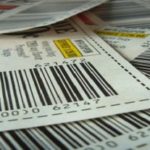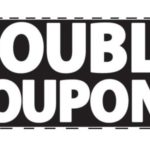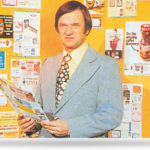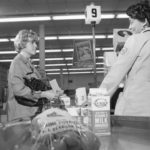
If you’ve ever shopped at a Dollar Tree, the checkout experience can be downright quaint. Since everything is a dollar, there’s no need for a scanner at the register. It’s easy enough for the cashier to just count your items and charge you a buck apiece. But when Dollar Tree started accepting manufacturer’s coupons last year, the lack of scanners presented a bit of a problem. Coupon values had to be entered by hand.
And to think that’s how it was done for decades. At least until the very first bar-coded, scannable coupons appeared, 40 years ago.
All this week, to mark the first anniversary of Coupons in the News, we’re taking a look at some milestone occasions that occurred in 1973 – events that helped create today’s culture of “couponing” (click here to read other stories in the series).
One of those milestones was the introduction of new technology that made buying groceries, and using coupons, a whole lot easier.
The concept of the bar code had been around for decades, before a concerted effort to apply the technology to consumer packaged goods and grocery stores began in the late 1960’s. By 1972, a Kroger store in Cincinnati was testing the idea, with bar code stickers stuck onto products.
And if products could be scanned, why not coupons too?
In early 1973, Procter & Gamble produced the very first bar-coded coupons, for Tide, Charmin, Ivory Liquid and Pringles potato chips. Coupons were specially coded to deduct, rather than add, a set value from a shopper’s total. Those four coupons were tested alongside all of the bar-coded products, at that Cincinnati Kroger store.
While the concept of scannable coupons survived and thrived over the next 40 years, that initial test was not a resounding success. At that time, the bar codes being tested were printed in a circular “bullseye” pattern, so they could be scanned no matter which way a cashier handled the product or coupon. It made sense, in theory, but smudges during printing could easily make the bullseye bar code unreadable. A competing, rectangular design was ultimately adopted as the standard, which remains in use today.
Still, those pesky smudges remained an issue over the next several years. Manufacturers began producing product labels that incorporated bar codes, eliminating the need for separate bar code stickers. With their high-quality printers, they had an easier time of it than newspaper publishers, who struggled to produce legible coupon bar codes on lower-quality newsprint. By early 1976, a newspaper publishers’ group was finally able to report that “with proper handling methods, the UPC symbol can be satisfactorily reproduced in newspapers for discount coupons”. But by that time, more coupons were appearing in glossy inserts than in newspaper pages anyway (read: “Couponing at 40: Newspapers Go Cuckoo for Coupons”). Even P&G began offering coupons in its very own Sunday insert, introduced in early 1974 and continuing on to this day.
But coupon bar codes have changed in recent years, as they’ve begun adopting the new longer rectangles that contain much more information. They remain as simple and scannable as ever, though, at least compared to the time before those first four bar-coded P&G coupons appeared 40 years ago. Think about that the next time your cashier scans your whole stack of coupons in no time flat – or the next time you patiently wait as your Dollar Tree cashier manually enters the value of each and every one of your coupons. Just like in grandma’s day!
Coming tomorrow: Double the Coupons, Double the Fun – how doubles helped turn couponing into a craze.















